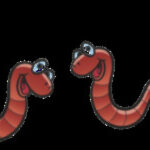Based on H.G. Wells’ timeless novel, the 1977 film adaptation of The Island of Doctor Moreau offers a watchable, albeit flawed, exploration of humanity’s hubris and the dangers of playing God. Echoing the classic Frankenstein narrative, this remake, while updating the 1933 version starring Charles Laughton, delves into the unsettling territory of scientific ambition unchecked by ethical boundaries. The film casts Michael York as Andrew Braddock, a shipwreck survivor who finds himself unexpectedly ashore on a remote island in the Pacific, the domain of the enigmatic Dr. Moreau.
Braddock is soon introduced to the island’s peculiar inhabitants: Dr. Moreau (Burt Lancaster), initially appearing as a gracious host; Montgomery (Nigel Davenport), Moreau’s hardened and secretive assistant; and the beautiful but aloof Maria (Barbara Carrera), presented as Moreau’s rescued ward. Initially, Braddock’s stay is marked by the monotony of island life. However, an undercurrent of unease begins to surface as he notices strange animalistic sounds emanating from the surrounding jungle at night and the unsettlingly unusual features of the island’s servants.
His growing suspicions are chillingly confirmed when Braddock stumbles upon the horrifying truth of Moreau’s experiments. He encounters grotesque creatures, resembling monstrous variations of the classic Wolfman, walking upright, clothed, and capable of speech, yet clearly not entirely human. Braddock realizes the terrifying extent of Dr. Moreau’s ambition: a modern-day Frankenstein figure, manipulating DNA in a reckless pursuit of scientific advancement, with Montgomery serving as his contemporary Igor. The film glosses over the practicalities of Moreau’s operations – the lack of sterilization and refrigeration in such a primitive setting raises questions about the feasibility of his experiments.
When Braddock confronts Moreau about the blatant cruelty inflicted upon these “manimals,” the doctor attempts to rationalize his actions. Moreau argues that his experiments ultimately serve humanity, aiming to eradicate birth defects and improve the human condition. Braddock, however, remains unconvinced, horrified by the ethical implications of Moreau’s god complex.
Despite their repulsive appearance, the film skillfully evokes sympathy for the plight of these human-animal hybrids. Living in squalor within dark caves, they are governed by “The Law,” a set of prohibitions – “Do not kill, do not shed blood, do not walk on all fours,” – recited daily by the Sayer of the Law (Richard Basehart), who appears the most human-like among them. Violations of The Law lead to punishment in the ominous “House of Pain,” where Moreau attempts to “correct” and remind the creatures of their supposed humanity.
A pivotal moment occurs when the Bullman, identifiable by a bison-like hump, breaks the law by shedding blood. Attempting to escape punishment, he is shot down by Braddock. This act of killing by Braddock, who seemingly faces no repercussions, exposes the inherent hypocrisy of Moreau’s Law in the eyes of the man-beasts. A silent question hangs in the air: why is Braddock allowed to kill with impunity while they are not? This perceived injustice, compounded by Moreau’s subsequent murder of Montgomery, fuels their growing resentment and ultimately ignites a rebellion against their creator.
In a dramatic climax, the man-beasts rise up against Dr. Moreau, turning on their master and destroying his compound in a fiery revolt. Ironically, this act of collective uprising reveals a nascent form of “humanity” within them. Their ability to plan, strategize, and execute a rebellion, as seen in scenes where they hang Moreau and methodically dismantle the House of Pain, demonstrates a capacity for thought and agency beyond mere instinct. In a twisted sense, Moreau’s experiments were not entirely futile; they produced creatures capable of evolving beyond his control, even if not in the manner he envisioned. The Island Of Doctor Moreau 1977 serves as a cautionary tale, prompting reflection on the ethical boundaries of science and the unpredictable consequences of tampering with nature.

